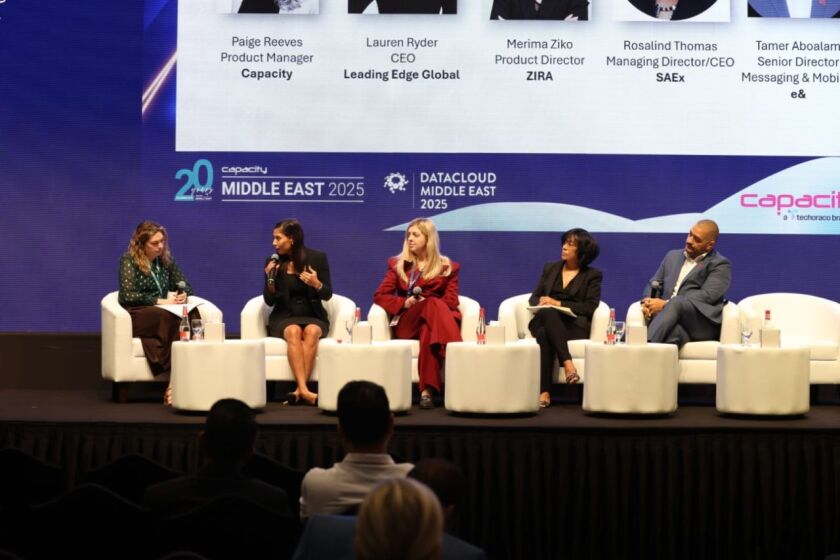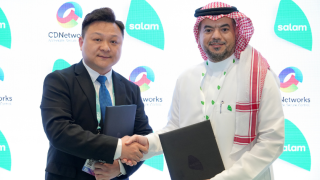Don’t get distracted by big AI numbers
Given AI is forecast to drive $1 trillion in global data centre capex by the end of the decade, it’s hardly surprising that this was the main subject under discussion in Dubai this year at Capacity Middle East.
But among the forecasts of exponential growth were several warnings from speakers to keep it realistic. One was Meta’s Head of Network Site Investments Amar Khan. “We don't want to see the industry to get too caught up with AI,” he said during the Keynote: How are Data Centres changing connectivity in the region? panel. “There is still a big opportunity in 5MW-10MW, there lots of scale at that level with facilities for enterprises and government entities,”
Fuad Mohseni, Batelco’s Head of Infrastructure & Projects, sounded a similar note, stressing the importance of the entirety of the infrastructure value chain. “(It’s important to consider) 1-2MW edge data centres that bring that content closer to the end users. The landscape is changing - when you’re asking how connectivity is the driving force between the data centre and the ecosystem; internet exchanges are a vital part of that.”
Private AI is a promising area
It seems a long time now, but 5G was the previous technology to benefit from the full hype cycle. While operators have often struggled to fully monetise their investments in the associated hardware and software, despite impressive coverage figures, one success story has been the rise of private 5G.
Providing bespoke, high-performance 5G solutions to specific organisations or settings has boosted both customer productivity and operator profits, and the sense at Capacity Middle East was that something similar for AI – AI-as-a-service or private AI – could provide a real return on AI investments. As Equinix’s MENA MD Kamel Al-Tawil put it, “The important question is, how is the region going to use AI to achieve economic competitiveness, the investment should be going into IP, digital infrastructure talent and capabilities to implement private AI as a service.”
Diversity is important – for manufacturers as well as routes
The Middle East has seen enormous investment in new subsea routes like 2Africa this decade so far, with more to come in the next few years. Much of this is to provide the capacity needed to fuel consumption growth, but the diversity provided by new routes is just as important as the extra bandwidth in the pipes.
But that’s not the only diversity the industry needs. Hybrid routes are important, combining satellite subsea and terrestrial. Additionally, Sparkle’s CEO Enrico Bagnasco brought up an important but under-covered bottleneck – diversity of manufacturer. “We need more diversity in the cable manufacturing industry as well. More cable deployments will mean a bottle neck in the cable manufacturing ability to follow the trend and requests,” said Bagnasco at Capacity Middle East.
Host content locally where you can
One trend to emerge from various discussions was the importance of local content. With gigantic traffic flows in the Middle East to serve demand for video streaming and especially mobile gaming, latency is a vital consideration – and this means more localisation of network management.
Domenico Jannelli, Senior Director Network Strategy EMEA at Akamai, was unequivocal on the matter: “You need to move to the edge to have a good user experience”
World Cup driving Saudi infra build
There is no shortage of drivers for infrastructure buildout in Saudi Arabia. But another one has come on the horizon. In December 2024, the Kingdom was confirmed by FIFA as host nation for the 2034 football World Cup.
Providing the connectivity for millions of extra connectivity customers, not to mention the streaming, broadcasting and content generation that will take place, is going to require serious buildout.
“In ten years’ time we will be hosting the World Cup, and we will need four times the capacity needed in Qatar in 2022. We need massive upgrades, and thanks to AI we will be able to tackle this very quickly,” said Omar Alsaied, GM, Wholesale Business Development at Mobily. For comparison, Qatar’s 2022 hosting of the tournament led to multiple connectivity upgrades and projects, including 5G provision across airports and fan zones.
Collaboration is important…
The Capacity Middle East exhibition floor saw a lot of photographed hand-shaking this year, with tie-ups between e& and DE-CIX, Mobily and iBASIS and Salam and Mada to name a few.
This atmosphere of collaboration is much needed for connectivity buildout in the region – not just between operators but also including hyperscalers, governments, and regulatory bodies. As Kalaam’s Group CEO Veer Passi put it, “We collaborate closely but must do more. Collaborate must be seamless — we need more carrier neutrality at datacentre and cloud level.”
…and so is governmental support
Numerous Capacity Middle East speakers identified one aspect of the region’s connectivity market that makes achieving this collaboration a far simpler ask – strong, longstanding and dependable government support.
“We have strong leaders,” said e&’s Group Chief Carrier & Wholesale Officer Nabil Baccouche. “Countries like UAE, Saudi and the whole GCC want us to deliver the best infrastructure. Invest in more diversification, data centres and subsea cables.”
Such a consistent regulatory environment makes a big difference for investors and participants in the market. At a time where countries in other markets are dealing with considerable public and at times governmental hostility to digital infrastructure buildouts, this support could be a key factor in the Middle East expanding its status as a connectivity hub.
Gaming is on the rise
Gaming is an important use case for operators all over the world. The Middle East is no different, and there is serious headroom for growth too, with Analysys Mason forecasting close to $7 billion market size for the sector in the Middle East by 2028.
One reason for this is solid government investment - $1bn in the UAE and $38bn in Saudi Arabia. A specific aspect of the Middle Eastern market, delegates heard, is that much more gaming happens on mobile devices in the Middle East, up to 80% of total traffic in place, whereas console and PC gaming dominates in other markets. This means local hosting of workloads is particularly important to ensure a smooth gamer experience.






